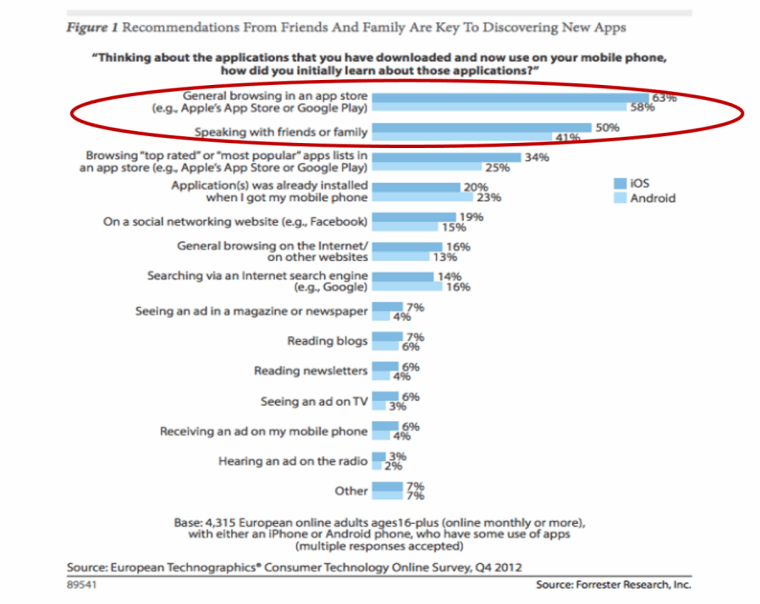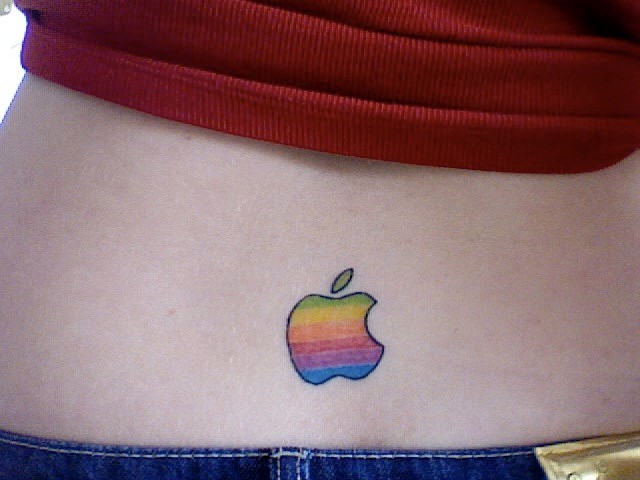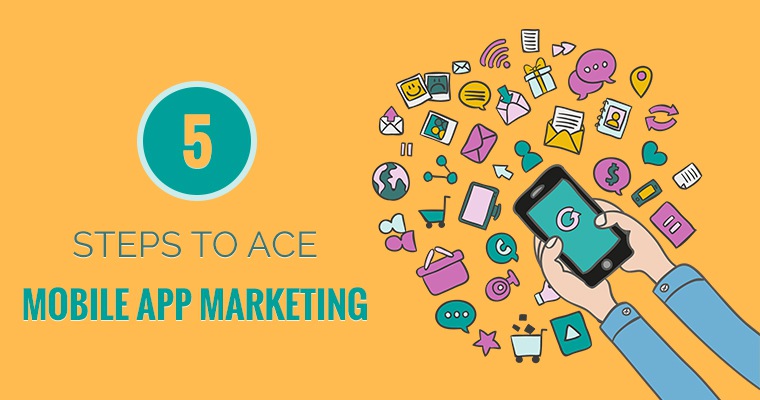Apps have been around for much longer than most of us realize.
The first apps made their appearance in the 1990’s via PDAs like the Psion and the Palm Pilot. The years that followed saw apps that ran on Java, Symbian, Brew, Bada, and more. Apps as we know them today made their debut in 2008 with the launch of Apple’s App Store shortly followed by the launch of the Android Market by Google.
Today, app development is a full-fledged career option with 627,000 jobs created by the iOS ecosystem since 2008 in the US alone. The year 2014 was an exceptional year for the app industry with a record-breaking $25 billion in revenue generated in just one year. Google Play was the clear leader in 2014 when it more than doubled the number of apps in its store. The App Store grew, too, by nearly 60%.
The flip side to this boomtown story is that of the 1.2 million apps currently hosted on the App Store, nearly 80% are ‘zombie apps’ with barely measurable downloads. The story is not too different for the nearly 1.4 million apps that Google Play hosts.
The biggest problem most apps face is one of discovery. Cracking the code to being ‘discoverable’ helps win half the battle of app downloads. So what DOES it take to stand out, get attention, and keep users interested? The answer is mobile app marketing.
1. A Great Product is a Great Start

As a developer, your app is your blue-eyed baby. It’s the best, most awesome app ever to grace an app store…according to YOU. That’s not good enough. Bounce off your app idea with friends and family to see what they think of it. If you have an existing business for which you’re building the app, get inputs from your existing users on what they’d like to have in an app.
The most fundamental requirement for any smash-hit app is simple. Your app has got to have swag.
By swag, I don’t mean all style and no substance. I mean, build an app that users will vie with each other to download. You could fulfill a need that currently exists. You could add unique functionality to an existing app type and create something totally new. You could build a game that makes Candy Crush pale in comparison. After all, according to Macquarie Research, games accounted for an estimated 75% of income on the App Store in 2014.
Work on the UI of your app to make it flow as intuitively as possible. Adhere to usability best practices while designing your app layouts. From beautiful transitions to minimal user inputs, spend enough time perfecting the user experience before you launch. Test your app with real users to identify flaws and fine-tune problem areas.
The bottom line? Even the best marketing can’t rescue a half-assed product.
2. Fully Optimize Your App
Countless hours are spent optimizing websites to make them discoverable by search engines like Google, Bing, or Yahoo. In comparison, the level of attention app developers pay to optimizing their apps is ‘app’allingly low.
Understand this. You have built a great app. You know that, your friends know that. Your audience does not.
By optimizing your app to search inside app stores, you are offering it the visibility it needs to be discovered and hopefully downloaded. Approach app optimization the way you would optimize a web page. There are very clear ‘in-app’ elements that help boost your app’s visibility.
- Begin with your app name: A name that contains keywords related to your app’s core function is a good bet for being picked up by app store search engines. Think Evernote, Snapchat or RunKeeper and you now know a big reason for their success.
- Get a professional writer to write a description of your app that excites the user: Ensure your description includes important keywords that will help your app be discovered easily.
- List your app in the right category before you proceed: A wrongly categorized app not only slips through the cracks of in-app search services, it also becomes hard to find when users filter by app category.
- A picture speaks a thousand words: Pick out the most beautiful screenshots of your app for the app stores you’re present on. Add a video walk through for a 1-2 punch.
- More than anything you can say about your app, a potential user will believe the words of existing users: Don’t forget to include reviews of your app in your app listing – one good review is worth more than ten average ads. Keep the virtuous cycle going by soliciting reviews from new users once they have used the app for at least a week.
- Size matters when it comes to app downloads: Keep the size of your app at a minimum to encourage users to download even more. This becomes even more important with an iOS app, thanks to the fact that the size of an iPhone’s memory cannot be expanded unlike Android and other platforms.
Still not convinced that app optimization is worth your time? Take a look at this piece of research from Forrester.

Discovering an app via the app store remains the most popular way in which users find and download apps.
3. Maintain an Active Mobile Optimized Site
From the data above, we see that close to 40% of users discover an app via the internet or the mobile web. When a user clicks through from a search results page or clicks on an ad on their mobile phone, she needs to be taken to a page where she can learn more about your app. In other words, a functional, mobile optimized site that showcases your app’s best features is an essential component of getting users to learn about and download your app.
Some quick advice for an app homepage that converts:
- Just as you SEO any regular website, your app’s homepage on the net needs to be optimized for search engines.
- A good app home is one that pulls the user in with inviting visuals of the app, captivating descriptions of what it is capable of even demo videos of the app in action.
- Offer social proof of how good your app is by including reviews by real users on your site.
- Did your app win any awards or honorable mentions in top publications? Show off your laurels to impress users into downloading your app.
- Lastly, but most importantly, do not forget to offer a download link to the leading app stores from your website.
4. Promote on Social Media
No marketing plan today is complete without including social media into the mix. Promoting your app is no different.
Before you sink in thousands of dollars into marketing your app, set up a social presence for your app on platforms that are frequented by your target audience. Developed a news reader app? Attack Twitter. Built a productivity app? Capitalize on LinkedIn. Got a female-centric app? Explore Pinterest. Built ANY app? Don’t miss Facebook.
Post content on social media that revolves around your app and links back to your app store page or your app website to maximize downloads. However, your posts can’t be all about downloading your app. Spice up your social media persona with content your target audience will value. Don’t stick to boring old text-based posts. Create interesting infographics, post arresting images, or share videos related to your line of business, and you will have users flocking to you for the variety of content on offer.
Use the extensive audience filters available on networks like Facebook to narrow down your target audience to improve your ROI. A Google+ page is a good idea if you have an Android version of your app. Not only does it help your app SEO, it also keeps Google happy.
5. Get Existing Users to Market Your App for You

There’s no better brand advocate than an existing user.
Once you get users to start downloading your app, don’t forget about them. Show some TLC to your existing users, and they’ll return the favor. According to Forrester Research, recommendations from friends and family is the second most important factor that contributes to new app downloads.
There are multiple ways to get your users talking about your app, such as:
- Offer exciting freebies to users in a way that benefits them without really hurting you. An app upgrade or an extra feature for zero cost is a good idea in return for sharing your app on their social networks.
- Build social sharing into your app with neat information bytes like “Sam just completed a three mile run using RunKeeper.” Vanity updates like these massage a user’s ego and are very likely to be shared by them on social media, increasing visibility and familiarity for your app.
In Closing
App marketing borrows from online marketing principles in many ways, but also has its own nuances that are unique to it. Compare and contrast them with this summary of the five steps to follow while marketing an app:
- Start with a great product
- Fully optimize your app
- Maintain an active, mobile-optimized site
- Promote your app on social media
- Get existing users to market your app for you
I leave you now with an interesting bit of information I came across in Flurry’s annual app statistics for 2014. For the first time ever, in the last quarter of 2014, Americans spent more time using their smartphones than watching TV. Old bastions are tumbling and new opportunities open nearly every day – are you ready to take advantage of them?
Image Credits
Featured Image: Created by author for SEJ
Image #1: Kieran Burgess (used under CC license)
Image #2: Survey by Forrester Research
Image #3: Jesska M (used under CC license)





